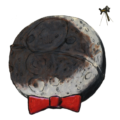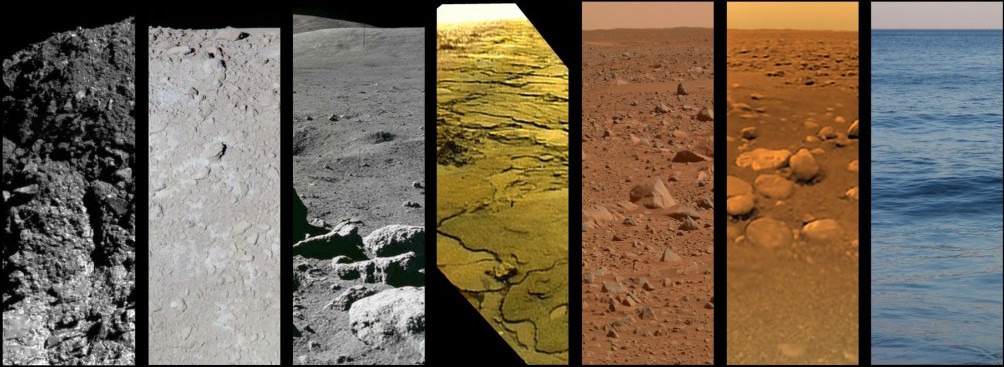
My work crosses disciplines, such as physics, astronomy, geology, and astrobiology, and spans much of the Solar System from Mercury out to the icy moons of Saturn. Generally, my passion lies in applied planetary science. My research focuses on processes that inform planetary defense by way of radar astronomy, planetary exploration by way of radar geology, and planetary protection by way of habitability studies. To do this, I use numerical methods, spacecraft and ground-based observations, as well as experimental results in order to have a fuller holistic view of the problems I study.
 Planetary Defense by way of Radar Astronomy
Planetary Defense by way of Radar Astronomy
On a near daily basis, Earth is impacted by meteoroids and even small asteroids, which typically burn up in the atmosphere producing shooting stars; however, we also know that Earth has been hit by much larger and more devastating objects. Luckily, impacts are one of the few natural phenomenon that we can actively defend against. To do so, we need to find, track, and characterize potentially hazardous objects (PHOs). In my work, I use radar observations to physically characterize asteroids by providing constraints on their size, shapes, and surface geology. Additionally, I am building a radar laboratory in order to provide improved insights for radar analysis by studying radar scattering in a controlled environment.
 Planetary Exploration by way of Radar Geology
Planetary Exploration by way of Radar Geology
For decades, we have been sending robotic explorers to study Solar System bodies up close, including returning samples from their surfaces. Now, we are on the brink of returning humans to the Moon and later Mars. The surface exploration of planetary bodies by both ground- and space-based assets have helped pave the way for the safe landing of humans to other worlds. Radar has played a key role in landing site risk assessment. In my work, I use radar scattering of planetary surfaces to provide constraints on their surface and near-surface properties, such as rock abundance and water ice content, to inform future missions.
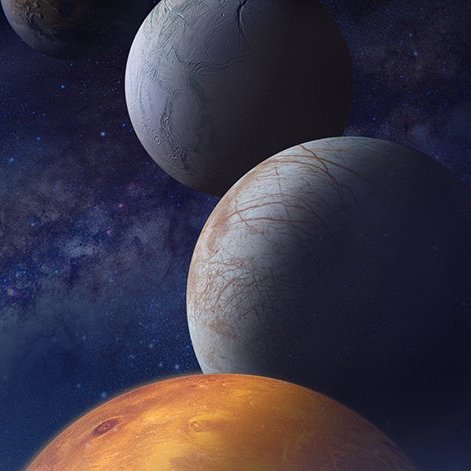 Planetary Protection by way of Habitability
Planetary Protection by way of Habitability
A fundamental drive to explore our Solar System and planets beyond is a search for the building blocks of life and of course a search for life itself. As we explore our neighborhood, though, we must do so in a way that protects potential extant life and preserves extraterrestrial environments to allow for the future search for extinct life. This is the keystone idea behind planetary protection. To guide such policies, I use spacecraft observations, experimental results, and environmental modeling to assess the potential for environments beyond Earth to host terrestrial life. In particular, I study the formation, stability, and chemistry of brines across the solar system.
Mission Involvement
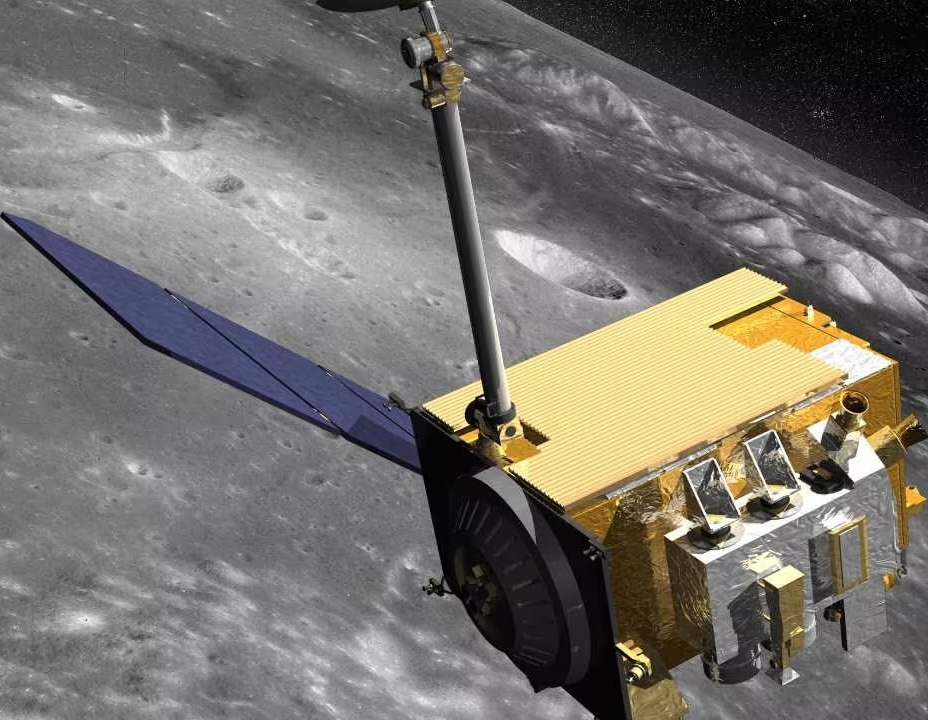 LRO’s Miniature Radio Frequency (Mini-RF) Instrument
LRO’s Miniature Radio Frequency (Mini-RF) Instrument
I am a science team member of the Lunar Reconnaissance Orbiter’s Mini-RF instrument. Mini-RF is a hybrid-polarimetric, dual-frequency synthetic aperture radar mapping the lunar surface at S-band (2380 MHz, 12.6 cm) and C-band (7140 MHz, 4.2 cm). I am in the radar science group for the team, where we work to improve the understanding of scattering mechanisms on the lunar surface and the underlying geologic interpretations. Find out more about Mini-RF here!
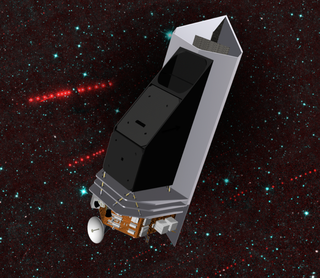 NEO Surveyor
NEO Surveyor
I am a member of the Science Investigation team of NASA’s NEO Surveyor mission. NEOSM, formerly NEOCam, is a planetary defense mission intended to discover and characterize NEOs with the specific goal of attaining the congressional mandate of cataloging at least 90% of asteroids 140 m in size and larger. I am in the radar science group of the team. Our objective is to provide sufficient ground-based radar-derived NEO sizes for calibration and testing of the instrumentation and techniques used by the mission. Find out more about NEOSM here!
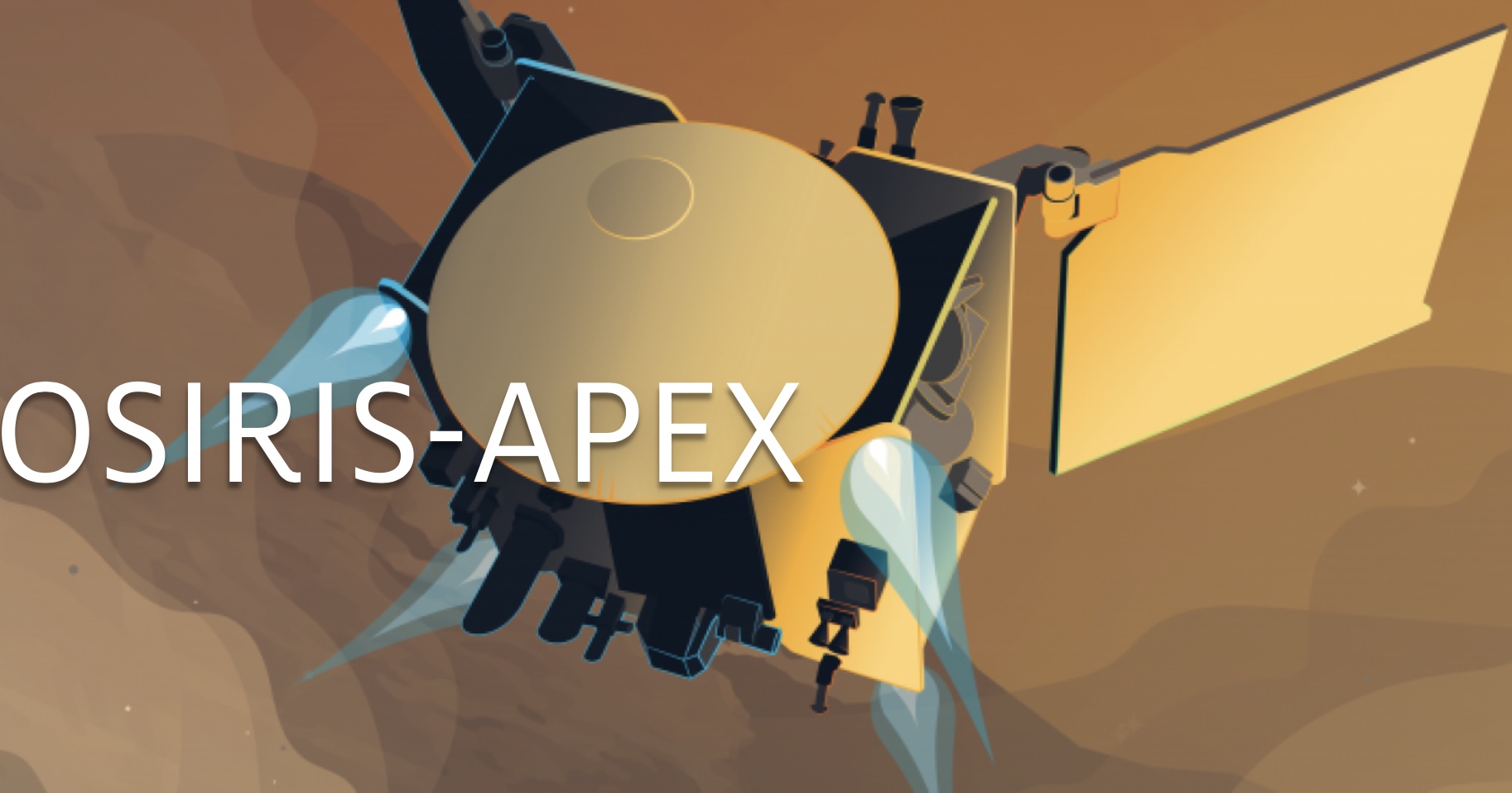 OSIRIS-APEX
OSIRIS-APEX
I am the Planetary Defense Lead for the OSIRIS-REx extended mission, named OSIRIS-APEX. The spacecraft will rendezvous with the asteroid Apophis after its dramatic close approach to Earth on Friday April 13, 2029. The mission aims to characterize in detail Apophis, and in particular to study the changes induced after the very close Earth approach. My role is to interface between NASA’s Planetary Defense Coordination Office and the mission, as well as to provide guidance for the key measurements needed to inform planetary defense strategies.
Students
Graduate Students
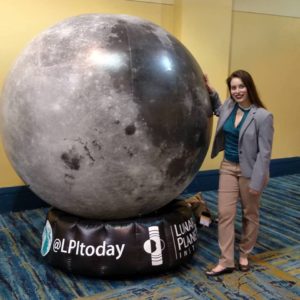 Rachel Slank, 2018 – 2022
Rachel Slank, 2018 – 2022
- Ph.D., Space and Planetary Sciences
- University of Arkansas
- Thesis topic: Martian simulation experiments focusing on atmospheric-regolith interactions, primarily deliquescence and adsorption
- Role: Ex officio Ph.D. committee member
- Primary Advisor: Vincent Chevrier
- Publications: PSJ
 Carlos Estevez Galarza, 2015 – 2019
Carlos Estevez Galarza, 2015 – 2019
- Masters in Physics
- University of Puerto Rico, Rio Piedras
- Thesis topic: Adsorption/desorption as a perturbative process to the martian water cycle: Insights from the Phoenix and MSL mission
- Role: Thesis Advisor
- Additionally Research Assistant, Arecibo Observatory, 2015
- Publications: LPSC
Undergraduate Students
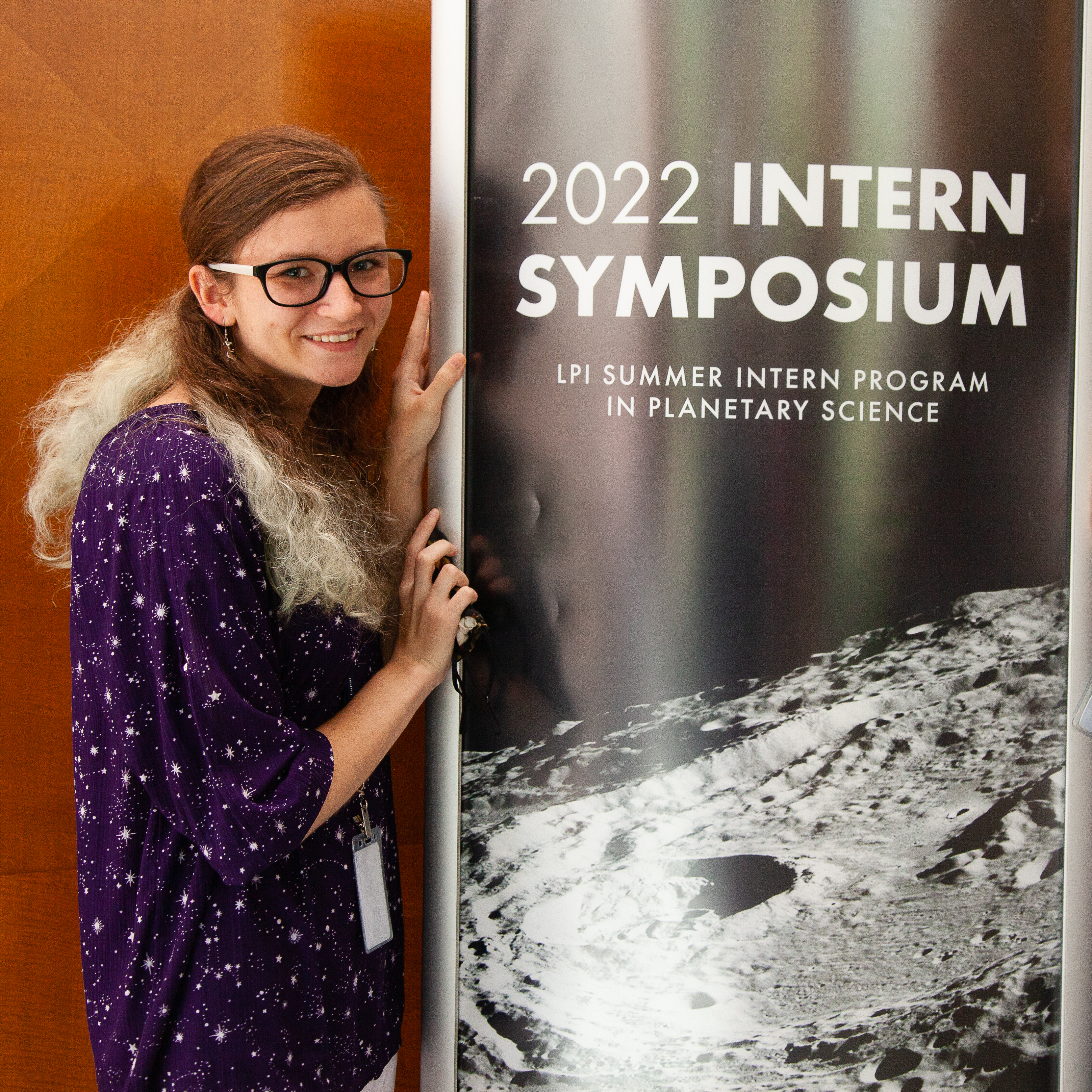 Chansey Champagne, Summer 2022
Chansey Champagne, Summer 2022
- USRA/LPI Summer Intern
- Topic: Automating size determination of near-Earth asteroids from low SNR radar imaging.
- Role: Advisor
 Christian Cooper, Summer 2019
Christian Cooper, Summer 2019
- USRA/LPI Summer Intern
- Topic: Post-bombardment signature of an increase in impact velocity on the Moon.
- Role: Advisor
 Gabriel Muñiz Negrón, Summer 2019
Gabriel Muñiz Negrón, Summer 2019
- USRA/PRIDE Lab Summer Intern
- Topic: Development of small profile doppler radar for planetary radar analog studies.
- Role: Advisor
- Publications: LPSC
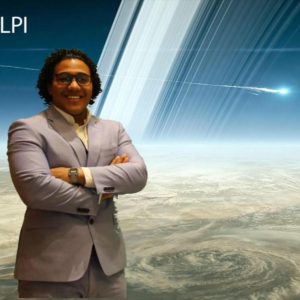 Andy López-Oquendo, Summer 2018
Andy López-Oquendo, Summer 2018
- USRA/LPI Summer Intern
- Topic: Ice-inferred ages of impact craters on the icy Moons of Saturn to infer the recent cratering rate
- Role: Advisor
- Publications: LPSC
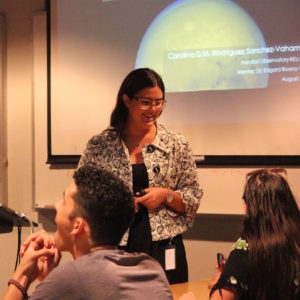 Carolina Rodriguez Sanchez-Vahamonde, 2016 – 2017
Carolina Rodriguez Sanchez-Vahamonde, 2016 – 2017
- NSF REU Student (2016) and Research Assistant (2017)
- Arecibo Observatory
- Topics: Morphology of small-scale, mass movement events at Gale crater, Mars & Cratering studies of Rhea and Dione
- Role: Advisor & Supervisor
- Publications: LPSC
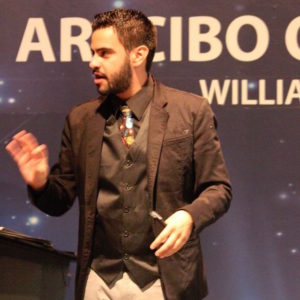 Bryan Rodriguez-Colon, 2015 – 2016
Bryan Rodriguez-Colon, 2015 – 2016
- NSF REU Student (2015) & Research Assistant (2016)
- Arecibo Observatory
- Topic: Subsurface biologic potential of Gale crater, Mars
- Role: Advisor & Supervisor
- Publications: LPSC
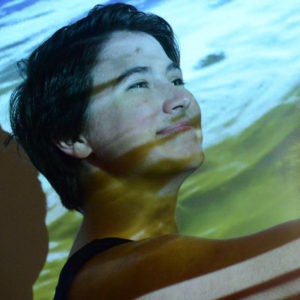 Clarissa Leight, Summer 2016
Clarissa Leight, Summer 2016
- NSF REU student
- Arecibo Observatory
- Topic: Impact-induced thermal histories of Rhea and Dione
- Role: Advisor
- Publications: LPSC
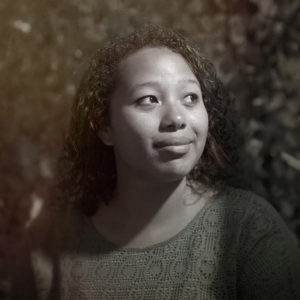 Erika Lopez-Garcia, 2013 – 2014
Erika Lopez-Garcia, 2013 – 2014
- Research Assistant
- Brown University
- Topic: Morphological study of Iapetus’ equatorial ridge
- Role: Co-advisor
- Primary Advisor: Amy Barr Mlinar
- Publications: Icarus
Others
- Reynaldo Castro Estrada, Summer 2015, Arecibo Observatory, RET intern
- Ilya Uts, Summer 2011, University of Arkansas, REU Intern
- Nitish Chopra, Summer 2010, University of Arkansas, REU Intern
- Victor Akunyili, Summer 2009, University of Arkansas, REU Intern
